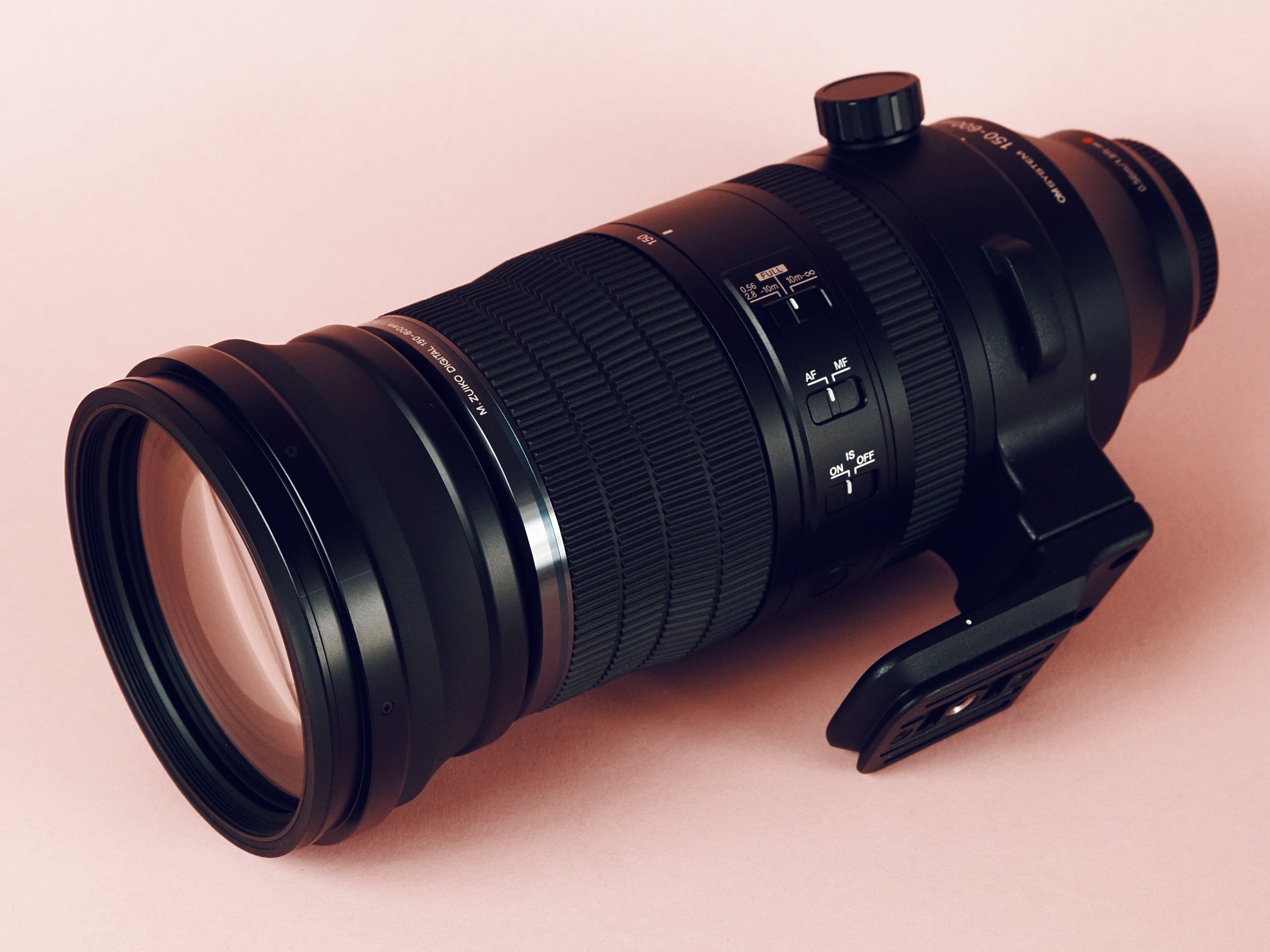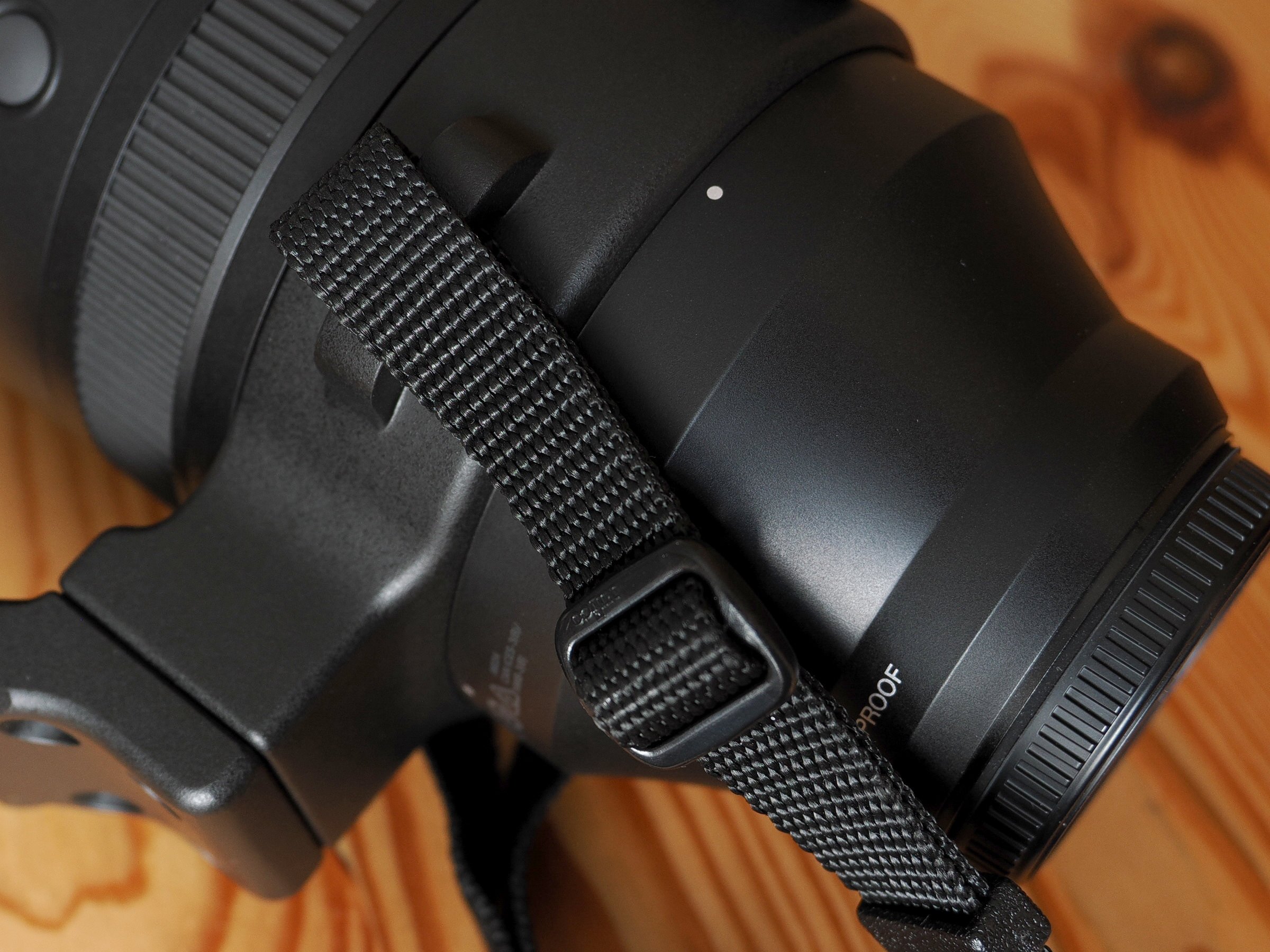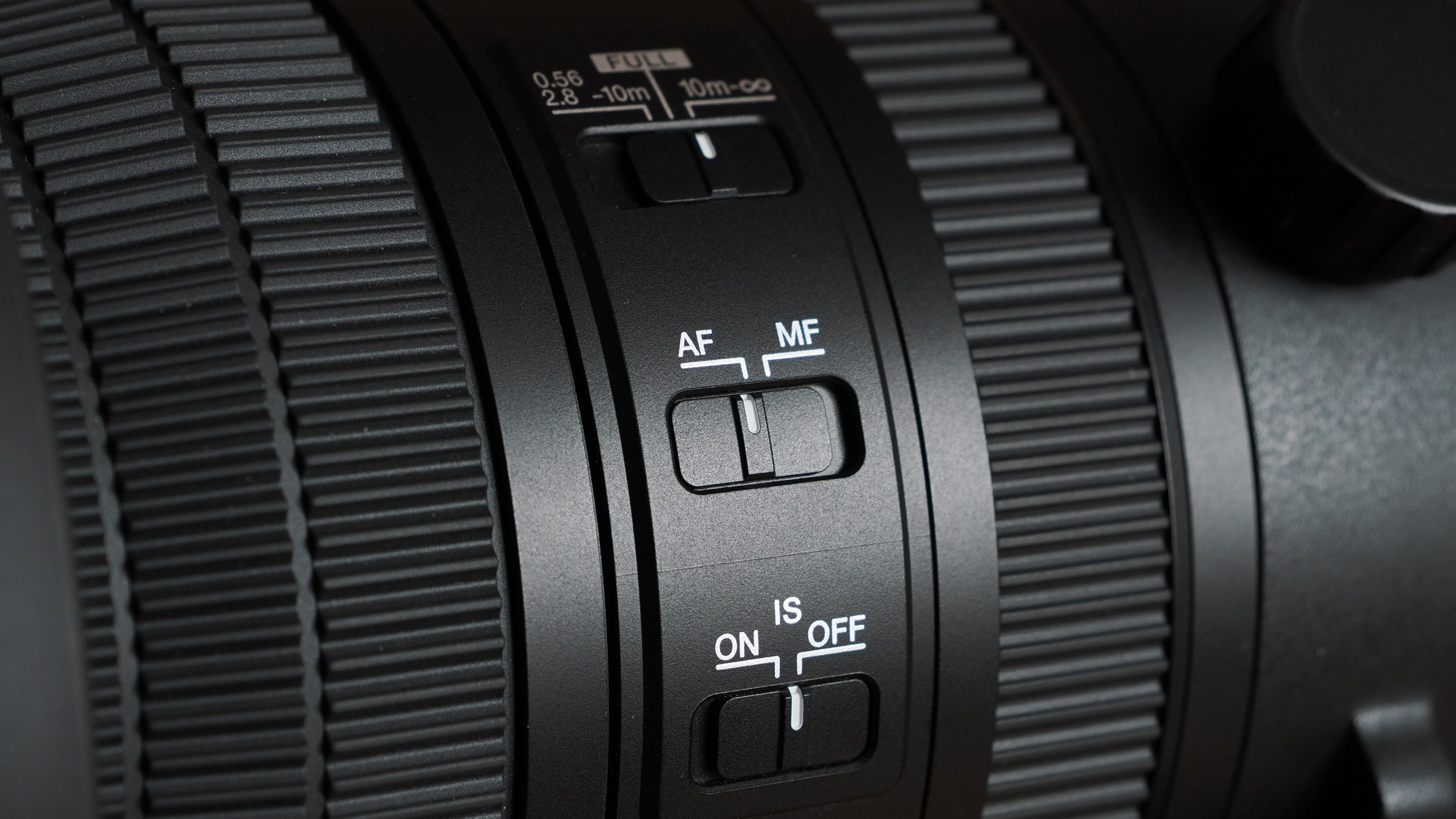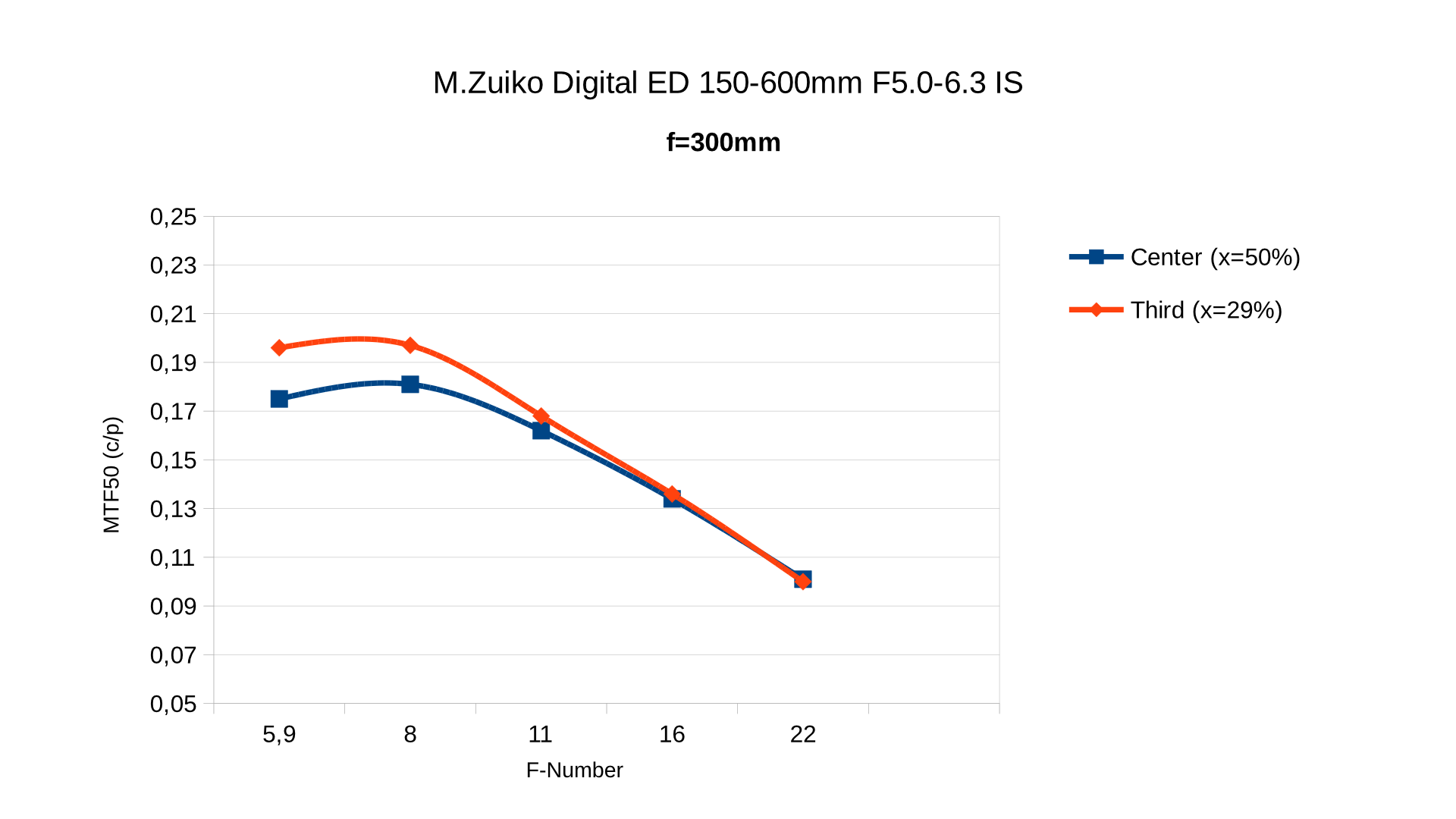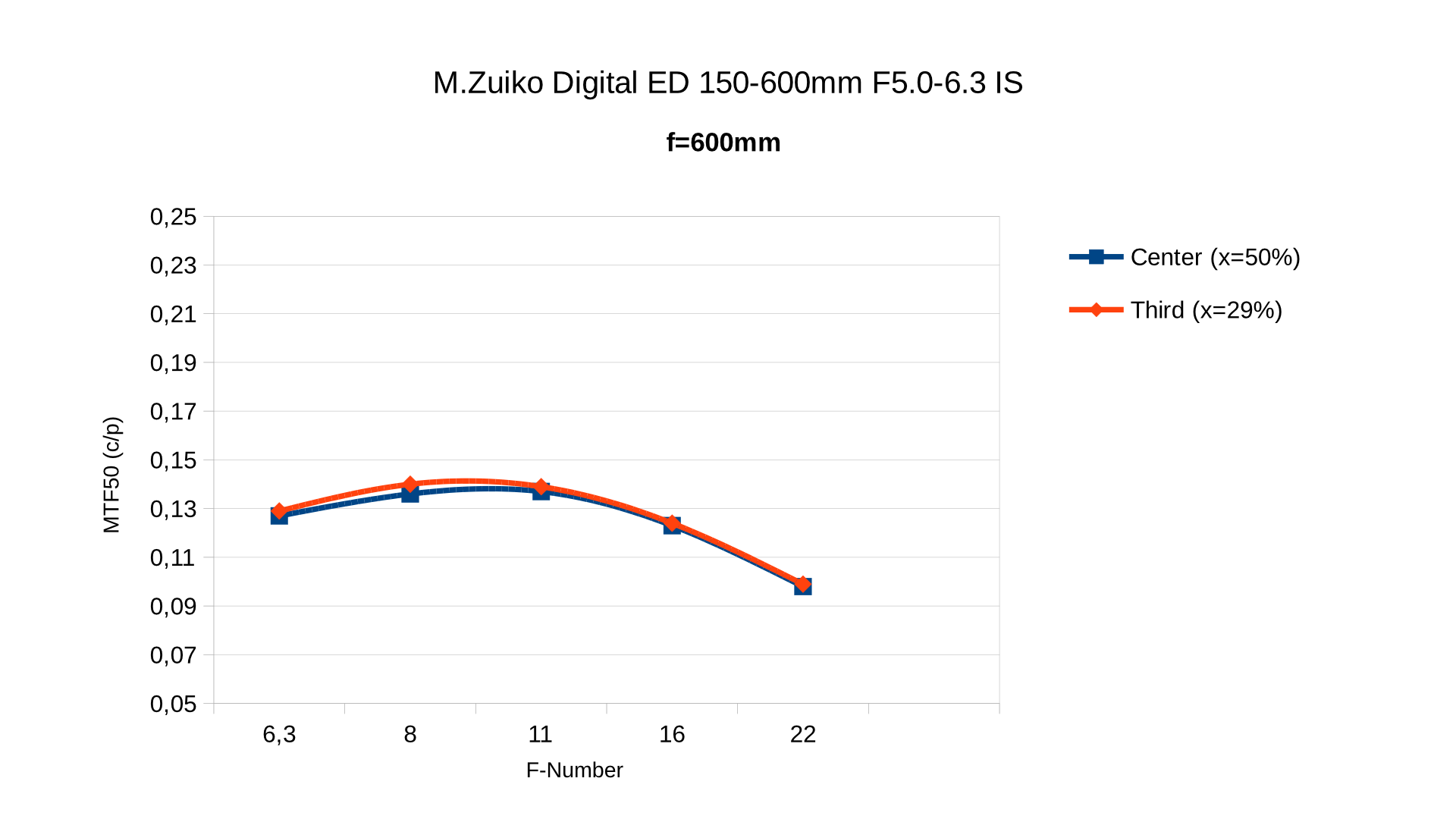OM System M.Zuiko Digital ED 150-600mm f/5.0-6.3 IS
1. Specifications
Lens mount: Micro Four Thirds
Focal length: 150-600mm
Max. aperture: f/5.0-6.3
Min. aperture: f/22
Close focusing distance: 0,56m at 150mm
Max. magnification: 0,70x (35mm equivalent)
Image stabilizer: Voice Coil Motor, 7 stops of stabilization with an OM-1 at 600mm with half-press IS off (CIPA testing standards)
Weight: 2.065g without lens hood and caps
Filter thread: 95mm
OM System M.Zuiko Digital ED 150-600mm f/5,0-6,3 IS
2. Design and Build Quality
Designed and built in Japan, the M.Zuiko 150-600mm lives up to the high consumer expectations associated with this label. For example, the inner lens barrel, which extends significantly when zooming the lens from 150mm to 600mm, does not exhibit the slightest hint of play, even at its furthest extension. The IPX1 level of weather sealing makes the M.Zuiko the perfect match for all weather sealed OM System bodies.
It is obvious that the 150-600mm is based on an already existing 150-600mm zoom lens. However, it is much more than a simple rehousing. The optical system was thoroughly adapted to fit the specific needs of a Micro Four Thirds sensor, which results for example in a close focusing distance of only 56cm at 150mm. The resulting maximum 0,7x magnification (35mm equivalent) is truly impressive for such a lens.
Note that the 150-600mm can be used with OM System teleconverters MC-14 and MC-20, to increase the already extensive reach even further.
3. Handling and Features
With an OM System OM-1 attached, the lens’s center of gravity lies exactly beneath the non-removable, full metal tripod collar. Extending the lens gradually shifts the balance towards the front, without becoming overly front heavy. Using the HLD-10 battery grip is generally recommended when working with the M.Zuiko 150-600mm.
The tripod collar comes with one prominent, heavy duty locking knob and two strap lugs. The latter are of high importance, as the lens should not be carried or operated by holding just the camera body. As a nice bonus, a high quality neck strap is included in the scope of delivery.
M.Zuiko Digital 150-600mm strap lugs with attached strap
In shooting direction on the right hand side, there is a switch to either lock the zoom of the lens to 150mm (L, “lock”), increase the torque (T, “tight”) or set the zoom function to low resistance (S, “smooth”). The T setting prevents any zoom creep and allows ultra-precise zooming, which is great for tight framing with the lens on a tripod. At the standard setting S, the zoom ring operates practically without any resistance. One can even zoom the lens by just grabbing the inner lens barrel, although this is not recommended as it can decenter the lens over time.
M.Zuiko Digital 150-600mm S/T/L switch
In shooting direction on the left hand side, three switches are to be found: The focus limiter switch, a lens IS switch (which also disables the in-body image stabilizer) and an AF/MF switch to enable the focus-by-wire AF ring.
The focus limiter switch has three settings: 0,56/2,8 to 10m; full focus range and 10m to infinity.
M.Zuiko Digital 150-600mm control switches
Ergonomically, the lens is designed to be used in both horizontal and vertical orientation. Located on various positions on the lens are three round, rubberized function buttons, which activate the function set for the LFn custom function button.
M.Zuiko Digital 150-600mm LFn button (one of three)
It is noteworthy that the M.Zuiko 150-400mm supports OM System’s in-camera focus stacking but not the 50fps full-AF/metering shooting.
4. Autofocus and Image Stabilizer
Autofocus
Although not an OM System PRO lens, the AF performance of the 150-600mm is fast enough for action, wildlife and even birds in flight. As there is practically no AF operation sound to be heard, the label MSC (movie and stills compatible) bestowed upon it by OM System is well deserved. Under certain shooting conditions (e.g. branches in the line of sight) setting the focus limiter significantly boosts AF performance.
Image Stabilizer
Overall, the VCM (voice coil motor) image stabilizer delivers excellent stabilization at all focal lengths when paired with the high-end OM System OM-1, confidently reaching the level of 7 stops at 600mm advertised by OM System and most likely even more. It is especially noteworthy that when using half-press IS and the AF of the camera, focus operation is very reliable and even when recomposing or tracking moving subjects, the experience is usually smooth, regardless of the set focal length and whether the lens is hand held or mounted on a tripod.
M.Zuiko Digital 150-600mm and lens hood
5. Optical Performance
The M.Zuiko Digital 150-600mm is a varifocal achromat.
Its impressive optical performance for an ultra telephoto zoom lens can be summarized with three statements:
Uniform resolution across the frame at all focal lengths.
Negligible chromatic aberrations.
No relevant distortion.
600mm f/8
Resolving Power
Testing conditions: The resolution values at various focal lengths were obtained at approximately the same magnification with an OM System OM-1 mark II. RAW-conversion was conducted in Affinity Photo without any sharpening or adjustments, ensuring very conservative results, easily reproducible in practice. The following graphic indicates the two positions where MTF 50 was measured. The positions cover approximately 70% of the full Micro Four Thirds image area.
MTF50 measurement positions
At f=150mm, the M.Zuiko achieves peak resolution. Interestingly, stopping down the lens at this focal length setting increases the mid-frame sharpness while decreasing the center sharpness to the point where the lens is sharper in the mid frame than dead center (f/8 to f/11)
Unsurprisingly, zooming in decreases the overall resolving power and at the most extreme focal length setting of f=600mm, the effective resolution the lens is able to deliver is noticeably reduced compared to its best performance at f=150mm.
Overall, the best average performance regardless of focal length and focusing distance is achieved at f/8, and I strongly recommend setting the aperture to this value. Stopping down the lens further should be avoided as this decreases the resolving power and therefore image quality. Only stop down below f/8 if more depth of field is required to get the shot.
600mm f/8
Chromatic Aberrations
Being an achromat, the 150-600mm exhibits longitudinal chromatic aberrations in the red and blue spectrum, measurable under lab conditions. When converting the RAW files using OM System’s proprietary software tools, practically no detectable longitudinal chromatic aberrations remain regardless of zoom setting.
Examining lateral chromatic aberrations, the situation is very similar. For an achromatic lens with such a long focal length, the minimal longitudinal chromatic aberrations in periphery of the frame are of no practical relevance and only visible in high contrast situations.
Minimal lateral chromatic aberrations
Image Quality at High Magnifications
The M.Zuiko 150-600mm is designed to achieve relatively high magnifications at long distances, allowing the photographer to capture images of for example very small animals which would otherwise be impossible to get.
Although some lenses can be pushed to achieve similar similar results by using teleconverters, such an endeavor inevitably degrades the image quality, and depending on the lens, potentially beyond what you are willing to tolerate. Under the same conditions, the M.Zuiko 150-600 is able to deliver stunningly crisp, high fidelity images almost effortlessly.
Close-up at 150mm, approximately 0,70x magnification (35mm equivalent)
Print Quality
Two factors limit print quality in practice – resolving power and (chromatic) aberrations. As the latter are practically non-existent, only the former has to be evaluated:
When combined with a 20MP OM System OM-1, prints of excellent sharpness up to 8x10 inch are possible, even when using a conservative demosaicing algorithm and no post production sharpening.
While this does not sound very impressive to the layman, the expert knows that this means that with the tested camera-lens combination, enlargements of any size are possible, because one would at least sharpen the image slightly and larger prints which would exhibit less quality are contemplated at longer distances, effectively counter-balancing the loss of fidelity.
600mm f/8
6. Verdict
The OM System M.Zuiko Digital ED 150-600mm f/5,0-6,3 IS offers compelling image quality, excellent build quality and of course extreme reach.
At first glance, the 150-600 seems to be a product for niche applications, but if you think about it, it is actually a compelling option for many: Of course, it is ideal for those photographing small wildlife. But also if you want to dabble into professional wildlife photography, but can’t afford the M.Zuiko 150-400 Pro, the 150-600 is just perfect. It is a significant step up compared to other M.Zuiko lenses in this focal length range. Also, some photo journalistic genres require ultra-long focal lengths. The 150-600 provides these capabilities. Don’t forget about surveillance applications – the ability to withstand adverse environmental conditions makes it ideal for those as well.
It goes without saying that such performance and versatility does not come for free and the lens has a certain size and weight. While there are smaller and lighter lenses for Micro Four Thirds, none of those delivers the same level of performance and the immense reach at the same time.
If you’ve read this far, I’m sure you know it already: This is the lens you’ve been waiting for.
150mm f/8
600mm f/8

